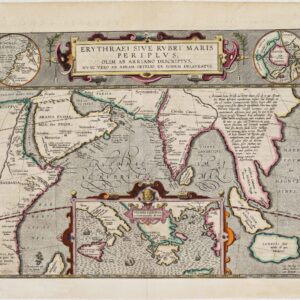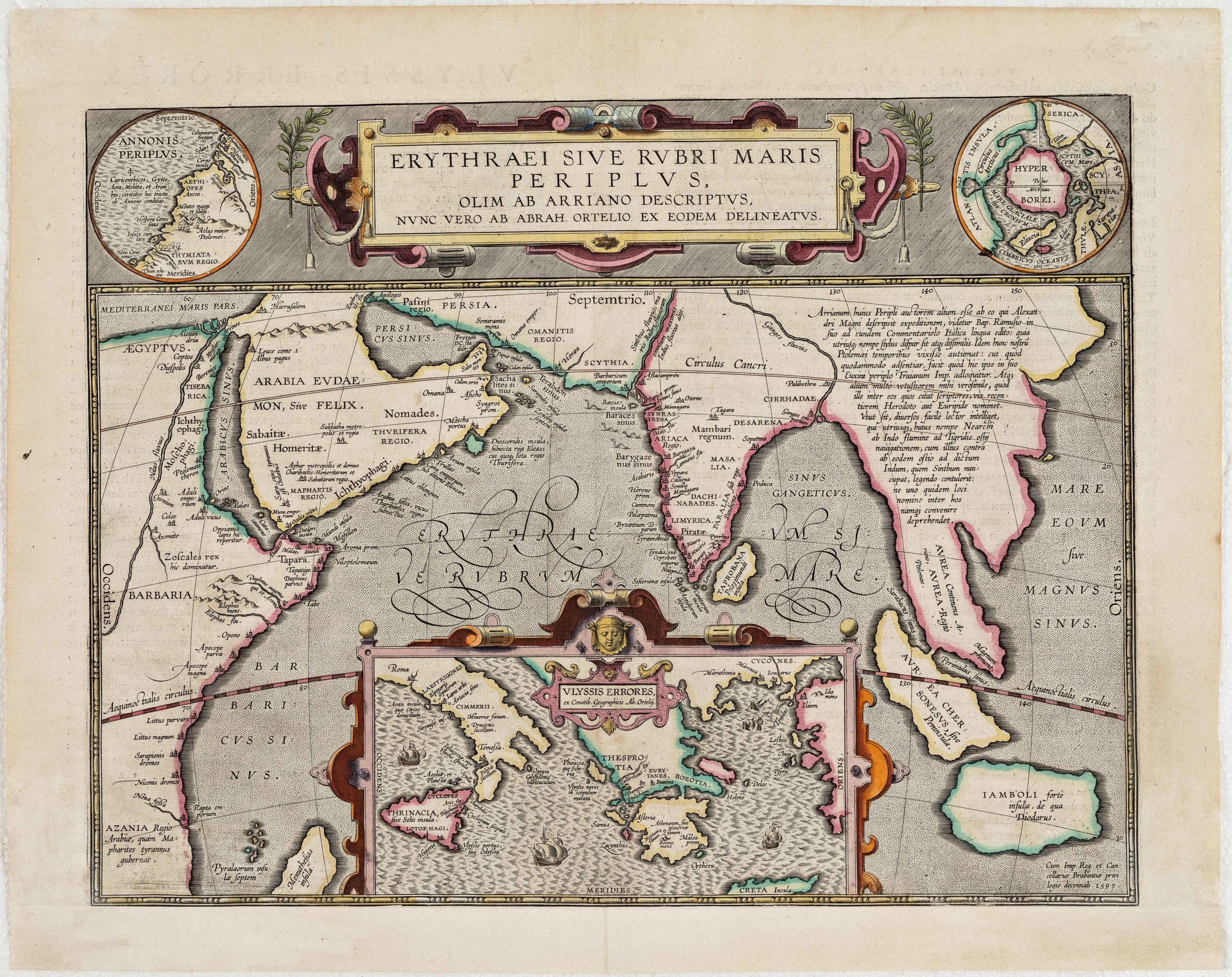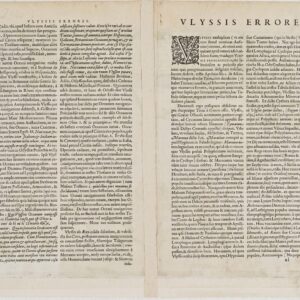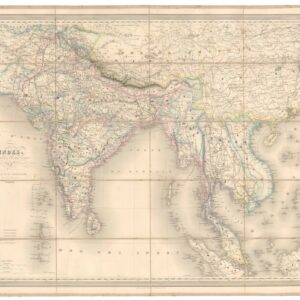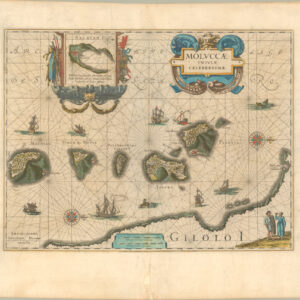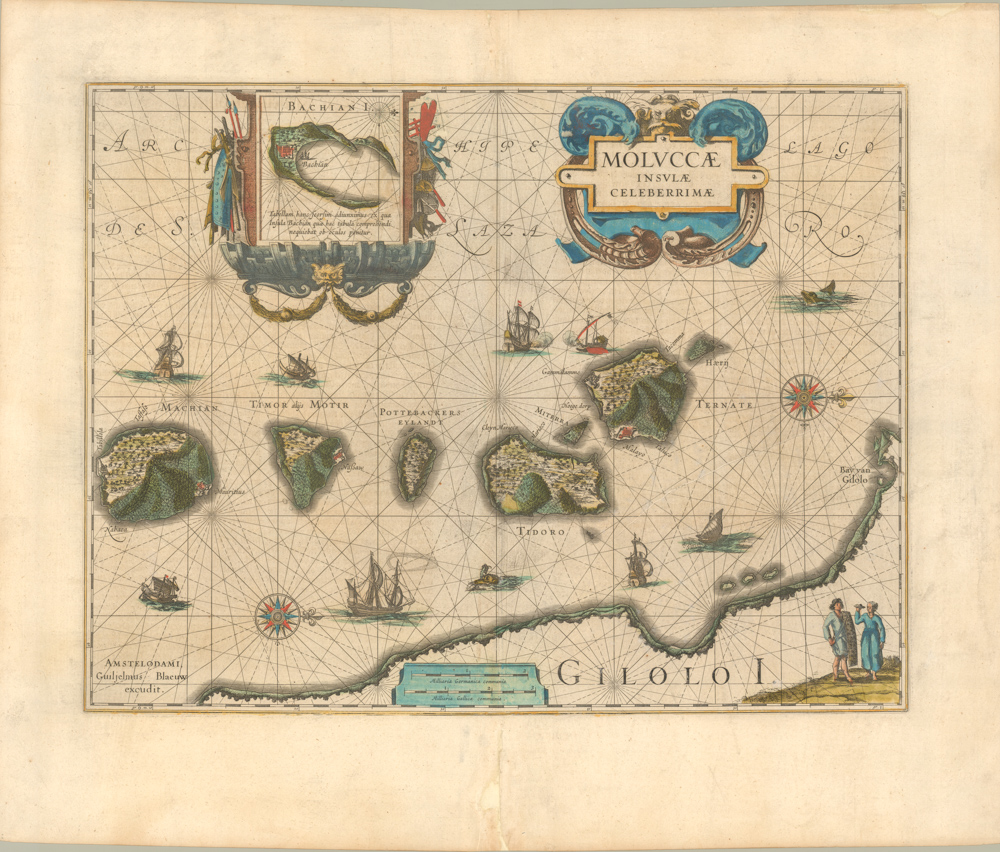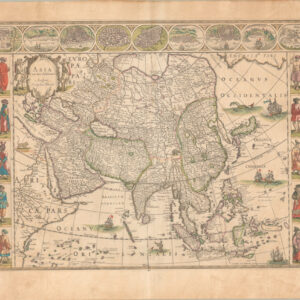An early printed map of Southeast Asia from the first modern atlas.
Undecima Asiae Tabula.
$7,000
1 in stock
Description
A foundational map for the cartography of Southeast Asia.
Untouched original hand color.
This is an early map of Southeast Asia by Martin Waldseemüller, included in his 1513 edition of Ptolemy’s Geography, often considered the first modern atlas. Although Ptolemy’s knowledge of these areas was limited and, in some cases, quite mistaken, the lands shown here most likely represent what we know as Bengal, Burma, Thailand, and the Malay Peninsula, though there is debate about the specific locations mentioned.
Prominent towards the bottom center is the “Golden Peninsula” (Aurea Chersonesus), which carried on an active trade with the Greek world in Ptolemy’s time. The odd shape, often referred to as Ptolemy’s ‘leaf,’ may stem from an amalgamation of the Malay Peninsula and Sumatra, mistakenly unseparated. A most fascinating cartographic element is found along the right side of the map, where a large land mass appears on the eastern side of the “Great Gulf” (Magnus Sinus, roughly where the South China Sea is located). If the center of the composition is indeed the Malay Peninsula, with modern-day Thailand and Cambodia above it, and China at the upper right, then the map should instead open along its eastern edge to the vast Pacific Ocean. Instead, the entire eastern side is land-bound. This curious feature is rooted in a long-standing geographical misconception that dates back to Antiquity: that the Indian Ocean was enclosed by a Great Promontory connecting Southeast Asia and Africa.
While local and Arab traders knew this was not the case, it was not until the Portuguese explorations of the late 15th and early 16th centuries that European cartographers began to understand the error. The Indian Ocean was ‘opened,’ resulting in a scramble to redraw and re-plot existing configurations. One example is the port city of Cattigara, which Ptolemy mentions as a luxurious trade emporium. On our map, Cattigara is found in the far southeast corner. When this promontory was jettisoned, Cattigara actually found its way all the way to South America on some maps.
Other observations:
- Towards the left of the map, we see the Ganges River running north-south. The river was an important dividing line for Ptolemy, and Southeast Asia is labeled INDIA EXTRA GANGEM, or ‘India beyond the Ganges.’
- Along the west coast of the Bay of Bengal, modern-day Myanmar, Waldseemüller delineates regions rich in precious metals and spices, including Aurea regio (kingdom of gold), Argenta regio (kingdom of silver), and Cirradia, which Ptolemy relates is famous for its cinnamon.
- South-southwest of the Aurea Chersonesus we find a set of islands said to be inhabited by Anthropophagi, eaters of human flesh. Another dangerous archipelago is located to the west: the Maniolae, which contain a magnetic stone that draws passing ships to their destruction.
Census
Waldseemüller’s 1513 edition of Ptolemy’s Geography, made in conjunction with Matthias Ringmann, was a years-long project that had actually been completed in 1508, just one year after the pair published Cosmographiae Introductio with Waldseemüller’s critically important map Universalis Cosmographia, which incorporated information from the voyages of Amerigo Vespucci. However, as the pair’s patron had died in 1508, it was five years before their Geography was published. The present map follows Ptolemaic conventions, but in the twenty-map appendix to their 1513 edition of Ptolemy’s Geography, Waldseemüller and Ringmann produced maps incorporating up-to-date information drawn from travel accounts (such as Marco Polo’s) and the earliest European voyages to the Americas and around the Cape of Good Hope.
This map is quite rare, particularly in such good condition and with original hand coloring. The OCLC has four catalog listings for it, all in Europe, while the entire atlas is more widely distributed in perhaps a dozen institutions on both sides of the Atlantic.
Cartographer(s):
Martin Waldseemüller (c. 1470 – 16 March 1520) was a German cartographer. He and Matthias Ringmann are credited with the first recorded usage of the word ‘America’ — on the 1507 map Universalis Cosmographia in honor of the Italian explorer Amerigo Vespucci.
Condition Description
Very good. Minor repairs at centerfold, including small infill.
References
Suarez, T. (SE Asia) pp.82-89; Campbell, T. (Earliest) #142; Campbell, Letter Punches: a Little-Known Feature of Early Engraved Maps. Print Quarterly, Volume IV, Number 2, June 1987, pp.151-4.
